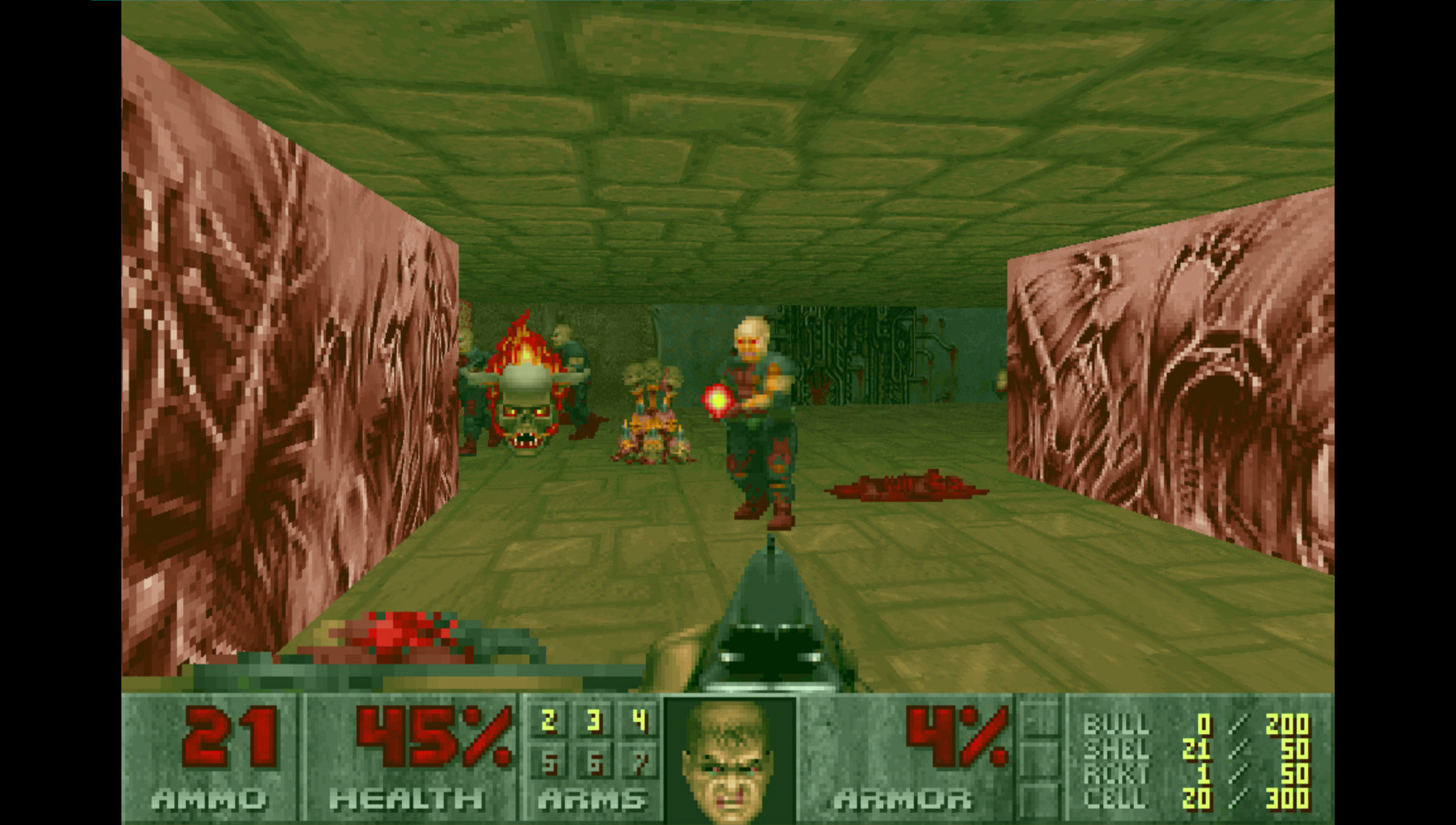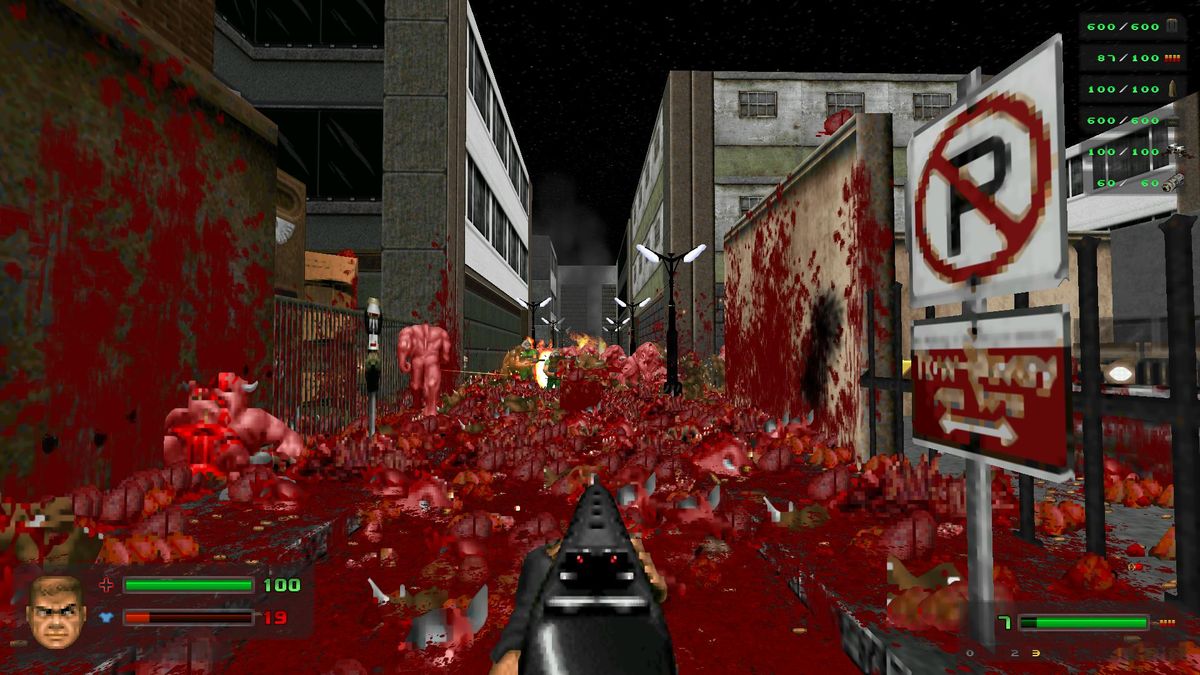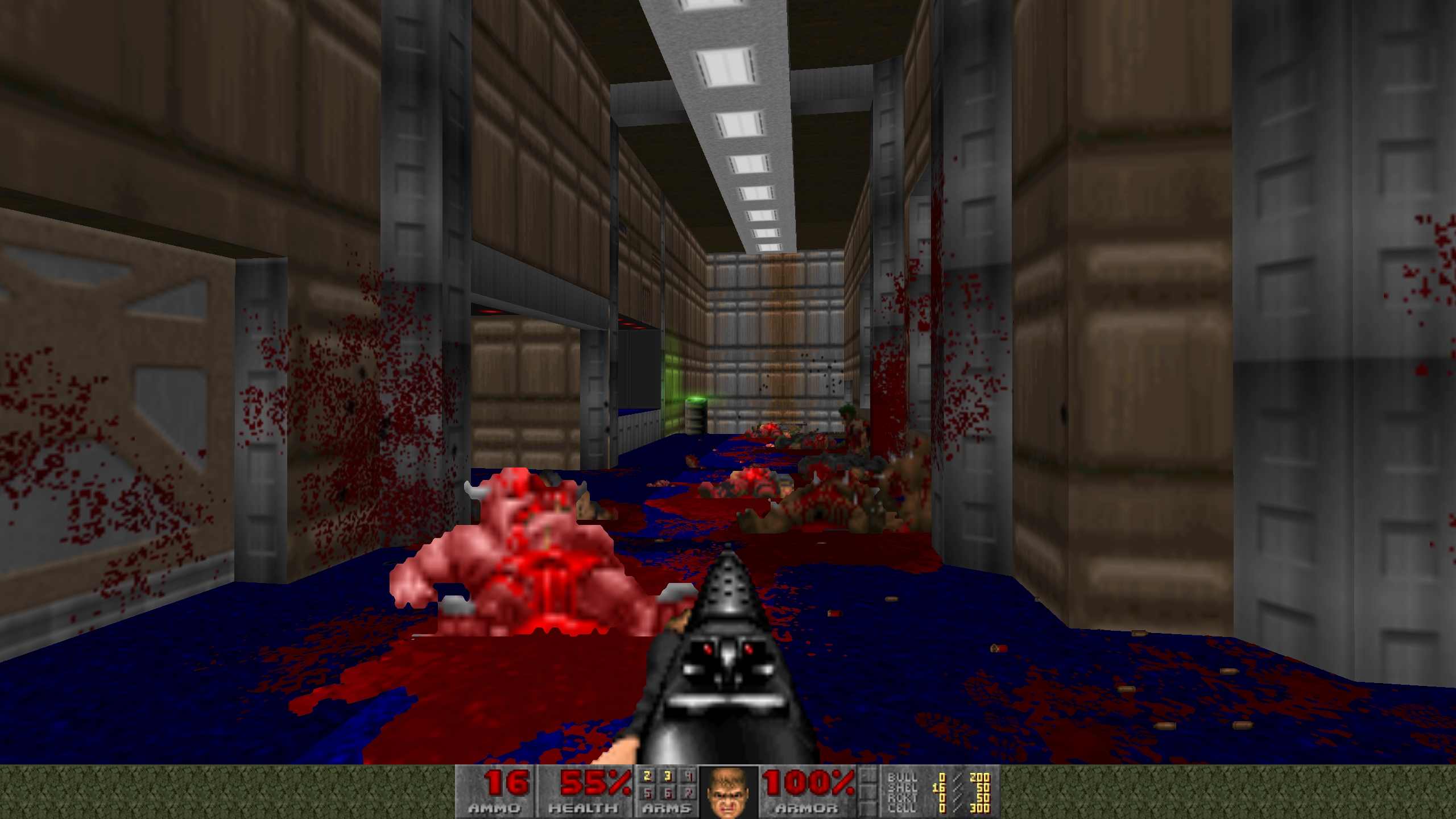

Art history is participatory and creative in ways more obvious than they've ever been. Regardless, projects like Brutal Doom foreground how our relationship to cultural history changes as the tools of media production become more readily available.

There are insights to be found in the things we forget, and we need to be careful, to ensure that we preserve artifacts of the past as readily as we reshape them. I'm not saying this is a bad thing, exactly, though it's a practice that's not without risks. As we modify and reimagine these games, we've created dozens, hundreds, each signifying an alternate version of videogaming's past. There's not just one Doom, or one Super Mario, or one Half-Life. Brutal Doom recently added weapons from the new Doom, taking new ideas that seem appropriately Doom-y and rewriting them into the game's past. And as our expectations change, as our memories shift and gather junk data with age, so, too, can we return to our old passions with those shifts intact, remaking them to suit us. That's what digital media does: it allows us to create alternate histories, versions of our gaming past that better match our heightened expectations. Brutal Doom is a temptation: why bother with the original at all if you think this one plays better, looks more interesting, and captures what's "important" about the original anyway? In a sense, the reality of playing any game in any particular setting is less important in a world where, with the right know-how, we can instead try to create an idealized version of that same game. It's an opportunity that puts us in an odd relationship with regards to our actual history. In Doom's case, that means building a new machine out of blood and cruelty. For a project like Brutal Doom, that means a chance to transform a source text into something that more closely resembles that cherished first impression.

For PC games, modifications can be created and shared to tweak just about anything.

Emulators-software that mimics the technology of older game systems-can be used to pump classics up to high-definition and adapt the controls to match modern conventions. Do we lean into that disappointment, or do we take our business elsewhere? Videogames are both machine and art, and as machines they're easy to tinker with. That leaves us, then, with an interesting choice. You might run into flaws you don't remember existing. Taking another look at something like Doom, rife with nostalgia, can be a fraught enterprise. Our positive feelings about our favorite games heighten the good and minimize the bad. What that means is, when you revisit the things you cherished in the past, you're likely not going to get quite what you remember, because what you remember doesn't really exist.


 0 kommentar(er)
0 kommentar(er)
